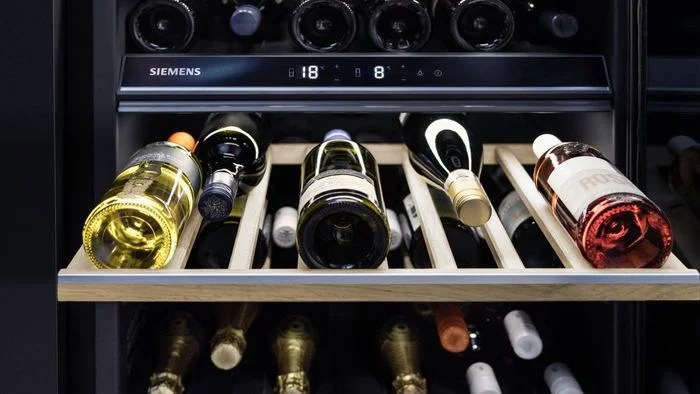Wine Storage

Wine Storage – Do’s and Don’ts
When storing wine, there are a number of factors to consider to ensure you aren’t disappointed when you finally open that expensive bottle you’ve been holding onto all this time! Understanding proper wine storage is essential to preserving its quality. Whether you are a casual collector or a serious enthusiast, following these tips can make all the difference in your wine experience.
Why are wine bottles stored horizontally?
Wine is stored horizontally to keep the cork in constant contact with the liquid. This keeps the cork soft and supple so it can do its job properly. If a cork becomes dry, it can shrink or crack, allowing air into the bottle. This causes your wine to oxidise, generally rendering it undrinkable. 
Of course, if your wine has a synthetic stopper, or a screw top lid, then it won’t benefit from horizontal storage. In fact, it was probably designed to be consumed young and so will not benefit from long-term storage anyway. This is an important aspect of proper wine storage, which ensures your wine develops as intended.
Optimum storage temperature
The optimum temperature to store wine for any extended period is between 12 and 18°C (55 to 65°F), depending on the type of wine. A general rule here is that lighter-bodied wines prefer the lower end of the scale, while full-bodied wines can tolerate the higher end.
It is very important that temperatures do not fluctuate too much. Any area with fluctuating temperatures or light is not a good place to store wine. In France, a wine cellar is called a cave. Historically, wines were stored in actual caves because they had no light and no temperature fluctuations.

When temperatures fluctuate in your wine cellar, the wine expands and contracts. This changes the pressure within the bottle and can push the cork out over time. Proper wine storage always takes temperature stability into account, ensuring your wine ages gracefully.
Avoid vibration
Another factor to consider is avoiding storage near sources of excessive vibration, as vibration can change the chemical structure of the wine, almost always causing it to age too quickly. The best example of the worst place to store wine would be anywhere near your laundry room—this is a definite no-no!
The vibrations from the washing machine or tumble dryer will constantly shake up your wine, while temperature changes will ensure your wine doesn’t know whether it’s coming or going. Minimising vibration is a key part of proper wine storage.
Wine storage cabinets and fridges
Specially designed wine storage cabinets are the best solution, especially for red wines. White wines can be stored for short to medium periods in a wine fridge. Wine fridges are designed for white, rosé, and sparkling wines and can be set to the optimum temperature. Regular household fridges operate at much lower temperatures, which are not suitable for storage.
Also, always keep wine away from pungent odours. Strong smells can permeate through the cork, and the wine can take on these aromas, inevitably ruining it. Using the correct wine storage equipment ensures your wine remains at peak quality and demonstrates proper wine storage techniques.

Keep a cellar diary
Wine bottles should be rotated half a turn every six months or so to prevent sediment build-up along the side of the bottle. If you don’t keep track of this, chances are you will either overdo or under do it, resulting in your wine not being quite as good as it might otherwise have been.
In your cellar diary, you should note when the wine is expected to be at its peak (there are numerous sites that can tell you when a specific wine will be at its best). There is nothing worse than getting your guests excited about a wine you’ve been saving, only to discover that it has already passed its optimum age. The same goes for opening a special bottle only to discover it needed another year or two in the cellar!
You can also keep a history of your wine ageing with helpful observations about the conditions. For example, you might track the average seasonal temperature of your cellar to ensure you are providing the wine with the best possible environment. Keeping a detailed record is part of proper wine storage practices and helps maintain the quality of every bottle.
Collecting wine is a fun, rewarding, and can be a profitable pastime. Don’t jeopardize your investment by being careless with wine storage! With a little attention to these key factors, your collection can mature beautifully and deliver unforgettable experiences.








